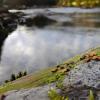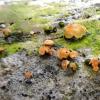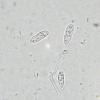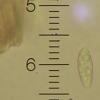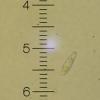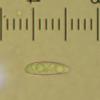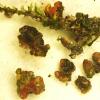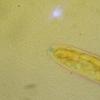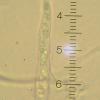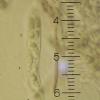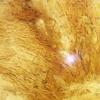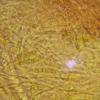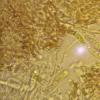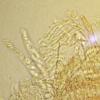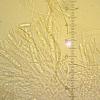
09-12-2025 12:06
 Andgelo Mombert
Andgelo Mombert
Bonjour,Je recherche l'article concernant Hypobryo

07-12-2025 16:07
Arnold BüschlenHallo, ich habe in einer Moos-Aufsammlung (epiphy

08-12-2025 21:04
Mark Stevens"Hello everyone,I'm relatively new to microscopy (

08-12-2025 18:59
 Lothar Krieglsteiner
Lothar Krieglsteiner
.. found by a seminar-participant, I do not know t

08-12-2025 17:37
 Lothar Krieglsteiner
Lothar Krieglsteiner
20.6.25, on branch of Abies infected and thickened

16-03-2014 22:00
Hello,I found this species a few months ago but ha

08-12-2025 13:39
Thomas Læssøehttps://svampe.databasen.org/observations/10572899
Orange, dark-stipitate apothecia on alga-covered wood in flood zone
Edvin Johannesen,
09-02-2023 16:29
 These apothecia were found in cracks on a mossy log with algal growth in a frequently flooded area. The underside is pretty dark, as are the rather short stems. The ectal excipulum consists of intertwined brown hyphae with cylindrical algal cells imbedded. The lower side of the excipulum is almost covered in algae. It almost appears that the fungus is lichenized, but I guess that is an illusion.
These apothecia were found in cracks on a mossy log with algal growth in a frequently flooded area. The underside is pretty dark, as are the rather short stems. The ectal excipulum consists of intertwined brown hyphae with cylindrical algal cells imbedded. The lower side of the excipulum is almost covered in algae. It almost appears that the fungus is lichenized, but I guess that is an illusion.I am still trying to figure out vital taxonomy/microscopy. The images below are from material which has been dry for months, mounted in water (except for the IKI one, in Lugol). I hypothesize that we see living spores inside (and outside) dead asci, but I'm not sure. The spores measure approx. 5-6 x 15-17.5 micr. Asci 90-100 x 7.5-10 micr. Spores contain a few large and sereval small guttules. Paraphyses are a bit difficult to interpret clearly - some seem filiform, some thicker and acuminate, some brownish with granular content. I assume they are dead? I have not seen croziers. The ascus pore stains blue in Lugol (no pre-treatment)
I have been thinking Phaeohelotium, but I am not sure how that genus is cureently to be understood. I don't see a distinct layer with rounded cells in the excipulum.
Any suggestions are welcome. Thanks.
Edvin Johannesen,
09-02-2023 16:30
Edvin Johannesen,
09-02-2023 16:33

Re : Orange, dark-stipitate apothecia on alga-covered wood in flood zone
Forgot to mention that the spores eventually become 1-septate, as you can see in one of the images.
Hans-Otto Baral,
09-02-2023 17:13

Re : Orange, dark-stipitate apothecia on alga-covered wood in flood zone
To me this looks a bit senescent. I more think of a Hymenoscyphus, H. calyculus perhaps. That should have croziers, however.
Edvin Johannesen,
09-02-2023 23:03

Re : Orange, dark-stipitate apothecia on alga-covered wood in flood zone
OK, I will check. Thanks a lot.

